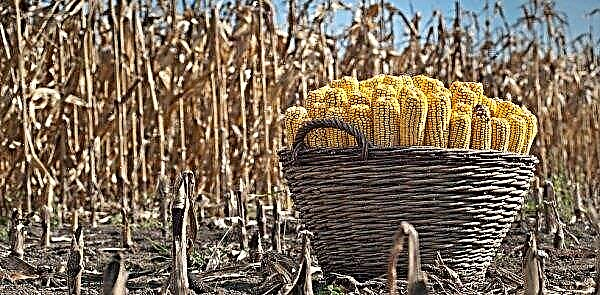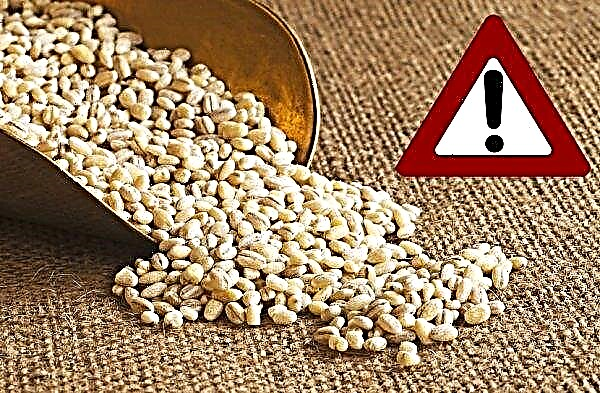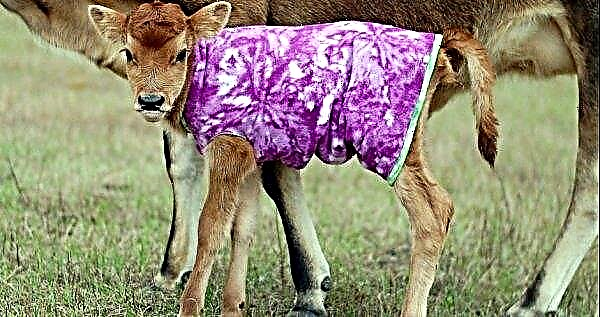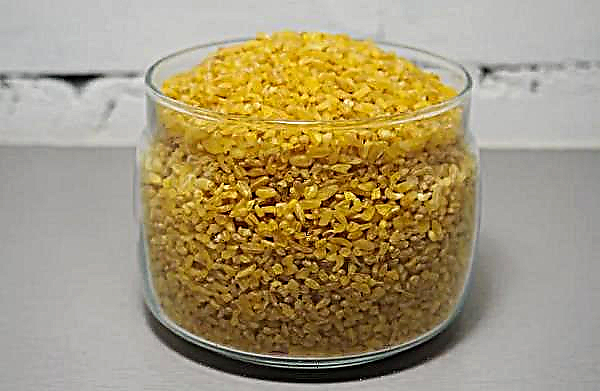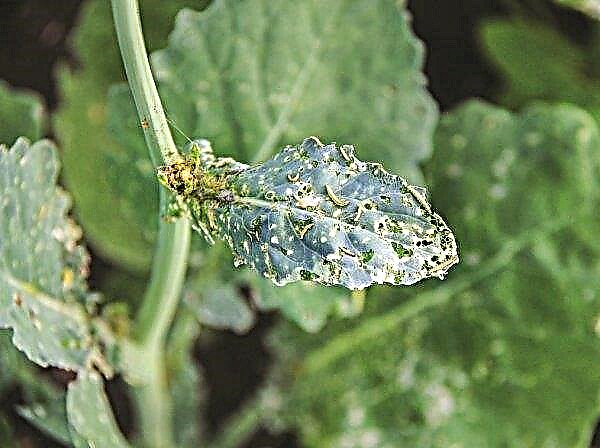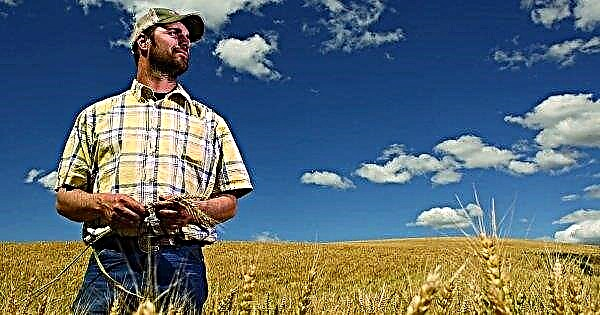Calving a cow most often occurs without problems and does not require human intervention. However, there are situations when the animal needs help in such an important process. Because of this, each breeder should have information about how to give birth to cows, what to do in case of difficulties, and how to care for mom and calf after calving.
What is calving at a cow
Calving is called giving birth to a cow, that is, the final stage of pregnancy, ending in the appearance of a calf. Pregnancy of a cow lasts approximately 280–285 days. The age and breed of the woman in labor, the gender of the baby, and the nature of the diet affect the duration of the birth. Usually a female carries 1 calf, but sometimes she can bring twins.
Did you know? With good care and feeding cows are capableto live average up to 20 years. However, Burenka named Big Berta, who celebrated her 48th birthday, entered world history. Throughout her life, she brought 39 calves.
Before birth, the owner of the cattle must make preparations to be prepared for such an important process and to be able to help the animal, if necessary.
How to run a cow before calving
Running cattle suggests that the pregnant animal is temporarily stopped milking. Do this gradually, starting 2 months before the expected end of pregnancy. Birthright and representatives of highly dairy breeds are launched 65–75 days before delivery. This process is necessary for the animal’s body to rest and gain strength before giving birth, as well as for the milk yield to be higher for the cow after calving.
A decrease in the daily number of milk yields is provoked by adjusting the nutrition, reducing the number of milking according to a special scheme and refusing to massage the udder.
To start the animal correctly, you need to perform the following steps:
- Reduce the amount of concentrated feed to 1 kg per day.
- Exclude succulent feed from the diet.
- Switch from three times milking to two times.
- After 3-4 days, if the amount of milk decreases, go to milking 1 time per day.
- After 3-4 days, stop milking altogether.
 This usually happens on the 5th day after the owner ceases to disturb him. In the summer, the amount of feed can be reduced by reducing the duration of walks - up to 4-5 hours a day.
This usually happens on the 5th day after the owner ceases to disturb him. In the summer, the amount of feed can be reduced by reducing the duration of walks - up to 4-5 hours a day.Important! In the case of a slow decrease in milk yield, it is necessary to reduce the volume of swill and water and increase the amount of roughage.
For cows that give 2 to 5 liters of milk per day 2 months before calving, the following start-up scheme exists:
| Day | The number of milking |
| 1 | 2, morning and evening |
| 2 | 1, morning |
| 3 | 1, morning |
| 4 | 1, evening |
| 5 | 1, evening |
| 6 | 1, morning |
| 7 | 1, evening |
| 8 | – |
From day 8, the cow is no longer milked.
Calving a cow and taking a calf
To be ready to replenish the herd, you need to know how the precursors of labor appear, how to recognize the beginning of calving and what needs to be prepared for the process. Veterinarians advise you to keep a pregnancy calendar, with which you can more accurately calculate when the cows begin contractions. It starts from the moment of fertilization, fixing the date of the beginning and end of the launch, the condition of the pregnant woman.
Signs of the beginning
If the owner of the animal will closely monitor him, he will be able to notice the characteristic signals given by the cow's body, and changes in its behavior, indicating a fast approaching calving.
Video: signs of calving
The following signs will testify of an early birth:
- swelling and redness of the genitals;
- the appearance of mucous viscous discharge from the vagina;
- udder swelling;
- colostrum excretion;
- lowering the sacrum.
To determine that childbirth is just around the corner is possible by the way the animal behaves.
For him, such changes in behavior become characteristic:
- anxiety;
- timidity;
- mooing occurs more often than usual;
- the desire to lie down and be in a lying position;
- the animal often looks at the stomach and tail;
- lagging behind the herd;
- desire for solitude.

Preparation for childbirth
For the birth to succeed, the cow needs to gain energy. Therefore, the first thing that the owner must do after he finds out that the cows are pregnant is to transfer her to an enhanced diet. Her diet must include minerals with salt and chalk, sugar beets, pasture, bran, silage. You need to feed the animal three times a day. A prerequisite for keeping a pregnant woman is to provide sufficient water. It should be clean and warm.
1.5-2 weeks before the expected date of calving, you need to start preparing the place where the birth will take place. It is necessary to thoroughly clean and disinfect it, regularly change the litter. A clean feeder and drinker must be installed in the room. It is also important to keep the cows themselves clean. Her hair needs to be cleaned, the udder washed more often.
Important! When feeding a pregnant cow, it is necessary to strictly monitor the quality of the feed and to discard rotten, moldy products on time. Poor food can provoke serious poisoning and complicate the course of pregnancy.
In the event of complications during childbirth, the owner will need to call the veterinarian to assist. Therefore, he must agree in advance about such an opportunity with a specialist and keep his phone number on hand. In addition, you need to invite a specialist to examine the pregnant woman before childbirth, assess her condition and exclude the need for a planned cesarean section.
How to take birth
The fact that the cow started calving, she will tell her behavior. The first thing she does is lie on her side (usually the left one). This is a signal for the owner that he needs to put the following items into the room where the delivery will take place:
- large capacity with warm water;
- soap;
- several pieces of towels;
- 1% potassium permanganate solution;
- 5% iodine solution;
- knife or scissors;
- hand sanitizer.
Next, a thick layer of straw must be laid under the head of the cow. The back of the animal should be washed with warm water and soap. Labor activity begins with weak contractions, which gradually increase. During uterine contractions, the cervix is opened. After its full disclosure, attempts begin - a process in which the calf moves along the birth canal.
In the normal course of childbirth, he steps forward, most often with the front legs, with hooves down. The norm is also considered to exit the rear hooves, which are directed down. The entire process of childbirth takes several hours, the passage of the baby through the birth canal takes 30-40 minutes. The duration of calving depends on certain factors:
The duration of calving depends on certain factors:
- what kind of birth does the cow have?
- how did the previous calving;
- health status of the woman in childbirth;
- fetal weight;
- number of fruits.
The owner of the animal during childbirth should be nearby and monitor so that the process goes well. If the birth is first, then it is desirable that a veterinarian be present. Before the calf leaves, in the case of maintaining the integrity of the fetal bladder, a person must tear it. Also, the umbilical cord should be cut after the baby is born, if it did not break during childbirth. It is necessary to leave a length of 15 cm and dip it in a solution of iodine. The remaining portion of the umbilical cord will need to be disinfected daily 2 times.
Did you know? The largest calf in the world at birth weighed 112 kg, and the smallest - 8 kilos.
The owner of the animal must immediately seek veterinary care in such cases:
- for a long time the cervix does not open;
- the active period of childbirth did not come half an hour after the discharge of the waters;
- the fruit has not come out completely;
- the cow has a large fruit;
- the birth of a dead calf;
- the calf goes head first.

What to do after calving
After giving birth, the mother and the calf already need help from a person. It will consist in the care of the baby and mother, their separation, proper feeding and giving away. Immediately after giving birth, the calf is left with the mother to lick it. So the cow will wash the cub at the same time, make its first massage and establish contact.
Important! Before each milking of a cow, it is imperative to wash the udder and massage it. This will avoid the development of mastitis and increase the amount of milk.
In the case when the mother refuses this procedure, you need to wipe it with a dry towel. In the first 45 minutes after giving birth, the calf should eat colostrum; this will be his main meal for the next 5-6 days. The owner will have to hand him over and bring it to the baby. Starting from the 7th day, the calf can be fed with talkers, and from 3-4 weeks - enter straw and fruits.
Cow care
After giving birth, the cow should be left alone for a while. She should be in a lying position for at least 30-40 minutes. During this time, the uterus will be able to cleanse and leave the last. After half an hour, for a speedy recovery of strength, an afterbirth and stimulation of appetite, women in labor offer her salted water in an amount of 1-2 buckets. After the last one comes out, it will be necessary to change the litter, wash the udder with warm water, massage and milk the animal.
What to feed
On the first day after calving, the cow should be fed with hay and silo. It is this food that will allow you to start lactation. On the second day, bran, aged in water, should be added to the diet - 1 kg. In the subsequent period, their number is gradually brought to 2 kg. From the 3rd day, root crops can be included.
You can go on to full nutrition after a week. The menu should be enriched with digestible carbohydrates. Food must be varied. It is advisable to change the menu every 2 weeks. When painting the volume of feed for a calving animal weighing 400 kg, you can focus on the following table:
When painting the volume of feed for a calving animal weighing 400 kg, you can focus on the following table:
| Daily milk yield | The rate of consumption of feed units per day |
| 8 kg | 8 units |
| 12 kg | 10 units |
| 20 kg | 14.2 units |
If the cow had difficulties during childbirth, or she gave birth to 2 calves, the veterinarian should schedule a daily feeding ration for her.
How many times to milk a cow
After giving birth, you will need to produce a cow. As we already mentioned, the first milking is carried out after the release of the afterbirth. At the same time, the udder is not completely emptied, but some colostrum is left in it. Colostrum is given to the calf. In the first week after calving, a 4-5-time milking regimen is established. The first milking is desirable to produce no longer than 5 minutes.
Milk arrives gradually. The highest rates of lactation are usually observed in the 3rd month after the birth of the calf. Crushing of cows that had problems during childbirth, edema, mastitis, paresis and other complications, should be done with caution and according to certain recommendations. The amount of milk will be affected by the diet of the cow, its breed, age, season, and number of calving. Birthright can produce 7-9 liters per day. Mature individuals after 4 calving can give 11-12 liters. And the representatives of highly productive breeds (Holstein, Yaroslavl) surprise with milk yield up to 40 liters.
The amount of milk will be affected by the diet of the cow, its breed, age, season, and number of calving. Birthright can produce 7-9 liters per day. Mature individuals after 4 calving can give 11-12 liters. And the representatives of highly productive breeds (Holstein, Yaroslavl) surprise with milk yield up to 40 liters.
When can I drink milk?
Milk of a calving cow is allowed to be consumed 8–10 days after birth. Some owners drink colostrum, although it has a specific smell and taste. It is impossible to use it without heat treatment.
Possible complications
The most common problems are:
- discharge of various nature;
- delay with the release of the afterbirth;
- lack or small amount of milk.
Pathological discharge
If complications arise, then the cow may have such abnormal vaginal discharge:
- Blood, red or brown. They indicate that the uterus, vagina, or infectious disease developed during childbirth. The appearance of blood secretions 4-5 days after calving indicates the development of endometritis.
- White, transparent highlight. They are a symptom of infection.
 Normally, the discharge from the genitals of the cow ceases after the uterus stabilizes, i.e. a few hours after calving. Any discharge after birth should be immediately reported to the veterinarian.
Normally, the discharge from the genitals of the cow ceases after the uterus stabilizes, i.e. a few hours after calving. Any discharge after birth should be immediately reported to the veterinarian.There is no last
With a delay, they resort to such actions:
- They give the animal to drink its own amniotic fluid.
- They are watered with a decoction of sunflower baskets (3-5 pieces), onion husks (3-4 glasses), ergot (20 g). The ingredients are boiled in 3 liters of water for half an hour. After cooling, sugar (200 g) and 7 L of water are added.
- It is drunk with a mixture of a decoction of onion peel (3-4 cups), sugar (200 g), water (5 l).

Small amount of milk
This complication can provoke several factors:
- the development of an infectious disease;
- improper confusion;
- long break between milking - longer than 10 hours;
- improper milking or massage, making sudden movements;
- poor nutrition.
In addition, you must follow these rules:
- The owner of the animal needs to properly massage, using only stroking and kneading, as well as milking - with confident, but smooth movements.
- Milking must be carried out daily, at the same time - a delay of even 15–20 minutes can lead to a decrease in lactation.
- At night, the break between milking should not be more than 10 hours.
So, calving in a cow usually occurs without human intervention, but must be accompanied by his observation. Each owner needs to know how the birth normally proceeds and how to act in case of complications. He should also learn how to properly launch and dispense.

